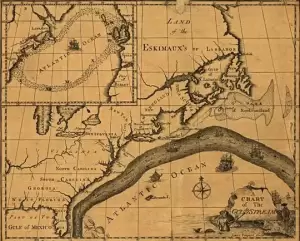Atlantic Ocean

Within the ocean, the current called the Gulf Stream flows from the Gulf of Mexico through the Straits of Florida, then north along the Atlantic coast. As it passes through the shallow Gulf of Mexico, the Gulf Stream heats up, then continues north along southeastern Florida, where it helps to warm the water and air throughout the year.
Starting in the 16th century, Spain gathered treasure from Mexico and South America and transported it back to Spain via the Gulf Stream. The proximity of Florida to this path made control of Florida an important goal for Spain, which she achieved twice (1565-1763 and 1783-1821). Treasure-laden ships sometimes sank along the Florida coast, including the 11 ships of Spain’s 1715 Plate Fleet, some of which have been located just north of Palm Beach County. Today artifacts from old ships are still found occasionally along Palm Beach County’s shores.

Coastal settlers in the late 19th century constructed and furnished their houses with materials that washed ashore from shipwrecks. Hannibal Pierce was an assistant keeper at the Jupiter Lighthouse in 1872 when the steamer Victor broke up offshore in a storm. The keepers rescued all the passengers and crew, while the cargo washed onto the beach and floated into the nearby inlet and Loxahatchee River. The Pierce family had recently lost all their possessions in a fire, and were delighted with the finds: bolts of silk and muslin, men’s suits, and a sewing machine that would give a lifetime of service. Seven canoes full of Seminole Indians joined their white neighbors in the salvaging, feasting on food and drink from the Victor on the beach.
A year later, when the Pierces left the lighthouse – in a lifeboat from the Victor – and settled on Hypoluxo Island, they built their home with materials gathered from the nearby beach, as described by their descendant, Gilbert Voss:
The Pierce house was built of heavy ship's timbers for corner posts, the siding from ship's planking, all gathered from the beach; the shingles were rived on the beach from ranging timbers and smoothed down by hand with a drawshave. The ceiling came from the nearest saw mill at Daytona Beach from timber carried up by boat, milled and returned, a round trip of about three or four weeks.
The beach often was their store and it was worked hard. Lumber was salvaged, barrels of food, cans of butter, kegs of wine, olives packed in oil, all found their way to the beach eventually.Gilbert Voss
The Pierce house became a carriage house in the 1930s, and is still in use as an outbuilding on the William Benjamin estate at Point Manalapan.

